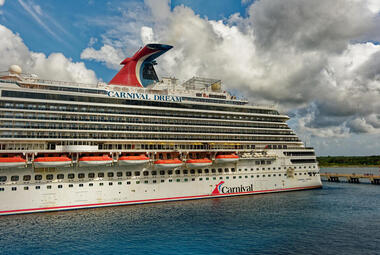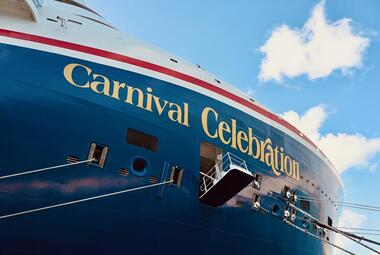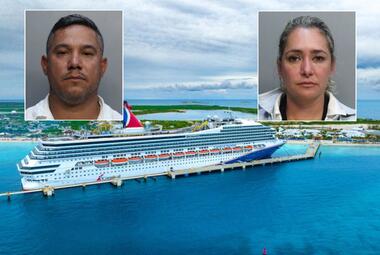If you take a 7-night Caribbean cruise, you'll likely visit at least three ports of call. Those sailing to the Western Caribbean tend to be able to cram four stops into a weeklong itinerary. However, according to Josh Weinstein, Carnival Corporation's President, CEO, and Chief Climate Officer, you may start to see sailings visiting fewer ports of call to save fuel and reduce emissions.
"When we think about the components to decarbonization, we've got the fuels; we've got retrofitting technology to reduce consumption...and then there's distance and speed," Weinstein said during a panel at Seatrade Cruise Global 2024.
"A cruise is like driving your car. If you go slower and you go shorter distances, generally speaking, you use less fuel and you emit less greenhouse gases, so to some extent, I would probably guess for [all cruise lines], that is a component of how we are going to continue to reduce our emissions footprint."

That doesn't mean that you should expect an influx of sailings to The Bahamas, as the industry has a responsibility to cater to where guests want to visit. Instead, cruise lines like Carnival have to navigate how to fulfill passengers' desires while generating a profit, minimizing consumption, and treating the environment with care.
As Carnival continues to build ships and expand their fleet, reducing the amount of stops on longer itineraries is not out of the question. "You can have itineraries that maybe don't do four stops in seven nights, maybe there's only three," Weinstein continued, "Maybe in ten years it'll be two."
Currently, Carnival's Excel Class sails on itineraries ranging from 6 to 14 nights, with the average weeklong cruise visiting three ports in the Caribbean
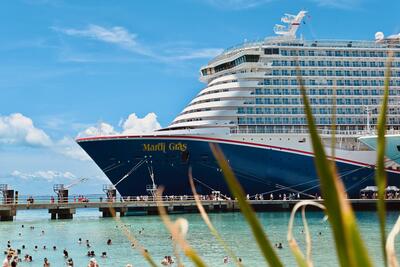
Whether you're sailing from Miami on Carnival Celebration, Port Canaveral on Mardi Gras, or Galveston on Carnival Jubilee, you'll likely visit a combination of three different ports, regardless of whether you're cruising to the Eastern, Western, or Southern Caribbean.
In comparison, cruises on some of Royal Caribbean's newest vessels, including Icon of the Seas and Star of the Seas, tend to visit four ports of call when sailing to the Western Caribbean, including the cruise line's private island in The Bahamas.
When browsing Carnival's website, it appears as though they don't offer as many port-intensive itineraries as their competitors. Even 7-night cruises on older ships like Carnival Magic seem to only visit three places. In fact, out of all of Carnival Magic's weeklong 2024 and 2025 cruises departing from Miami, there's not a single sailing scheduled to visit four ports of call.
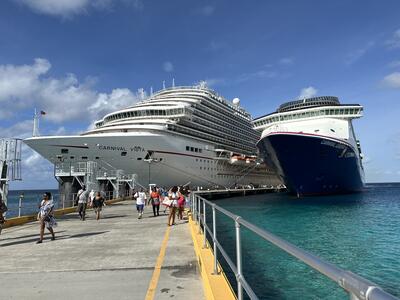
If you want to visit more desintations, you'll have to select a longer cruise. The more days you have onboard, the more time the ship has to reach different destinations, especially if they're sailing at slower speeds to reduce their overall emissions.
You can, for instance, find plenty of 8-night sailings onboard Carnival Magic that are scheduled to visit four ports. Having three days at sea ensures that the ship doesn't have to hustle from one port to another. Instead, they can sail at slower speeds, with the extra day being utilized to dock at another destination.
Celebration Key is supposed to help Carnival cut their fuel costs
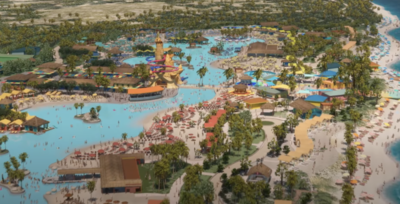
Since Celebration Key is located on Grand Bahama Island, which is roughly 120 miles from Miami, sailing to the brand-new port will help Carnival reduce their fuel consumption. Thanks to the impressive number of berths, the island will be able to accommodate over 20,000 guests per day.
Currently, Carnival has released over 500 itineraries on 18 ships through April 2026 that are expected to visit the new private destination. They range from short 3-night getaways to 14-night Transatlantic sailings, as well as Southern Caribbean and Panama Canal cruises.
The project began back in 2022 and is expected to be finished in July 2025. In total, it's estimated to cost about $500 million. In comparison, Royal Caribbean spent about $250 million when they renovated Perfect Day at CocoCay in July 2019.
Reducing the number of days spent in port increases Carnival's profit from onboard spending
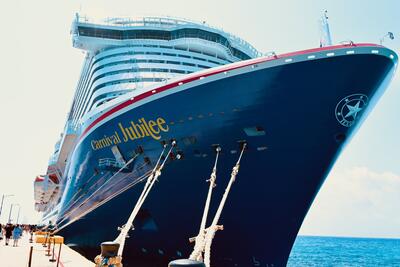
By turning a port day into a sea day, Carnival is increasing the likelihood of passengers spending more money while on the ship, rather than spending it on third-party excursions or other miscellaneous add-ons while ashore.
If you aren't worried about shelling out money for three or four excursions, you may feel inclined to splurge on a specialty dinner or buy the drink package since you'll have more time on the ship.
In terms of the cruiser, the fewer ports visited, the less each passenger will owe in port fees. On an average 7-night cruise to the Caribbean, you can expect to pay anywhere from $130 upwards of $230 per person. Of course, the actual amount depends on how many guests are onboard your specific sailing, as well as how many ports you're scheduled to visit.
Read more: 25 Fun Things To Do on a Cruise Ship Sea Day
Back in October, Weinstein said that fuel surcharges are "certainly not off the table"

According to Carnival's contract, they reserve the right to charge a "fuel supplement" of $9 per person, per day without prior notice if the price of crude oil rises to over $70 per barrel. Weinstein, however, said that the long-term goal for Carnival is to reduce the overall fuel consumption, rather than offset the rising cost of fuel to passengers.
"We continue to work aggressively to manage fuel costs the best way possible by consuming less," he said during the third quarter earnings call, "I know this is stating the obvious, but not only is this effort benefiting our bottom line by hundreds of millions of dollars, [but] it's also better for the environment."
Weinstein estimated that by using less fuel, the company saved around $375 million in 2023 versus what their spending looked like in 2019.




